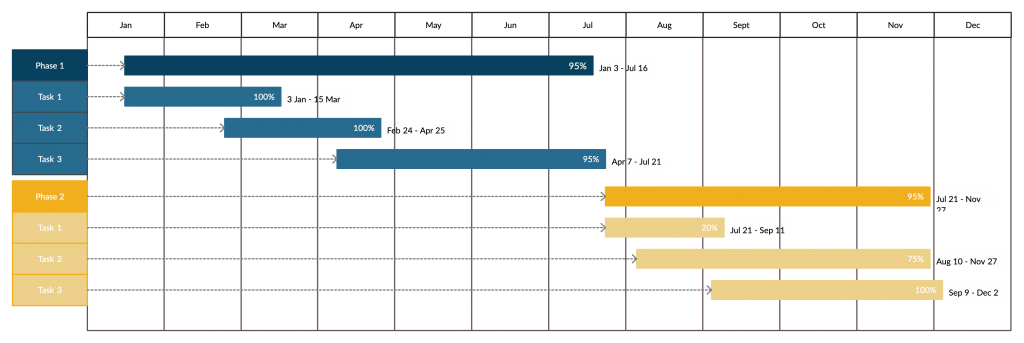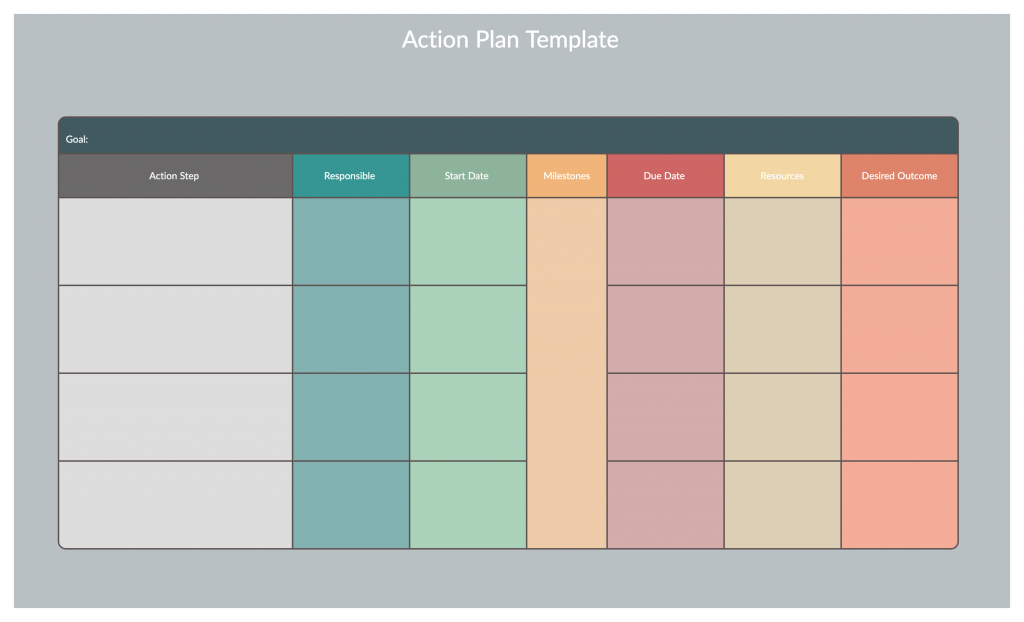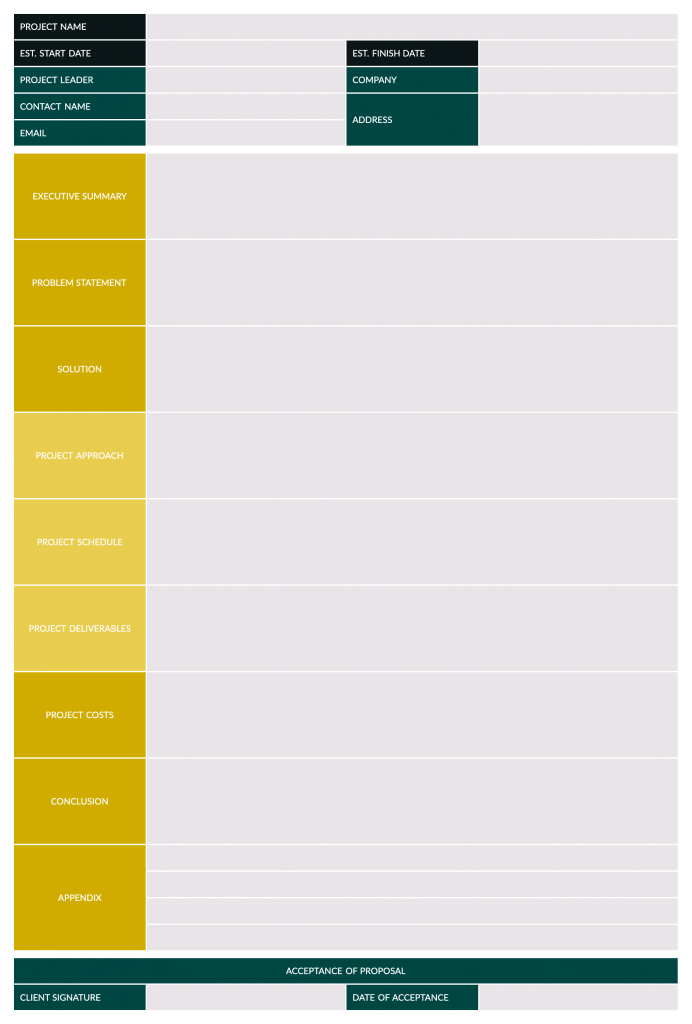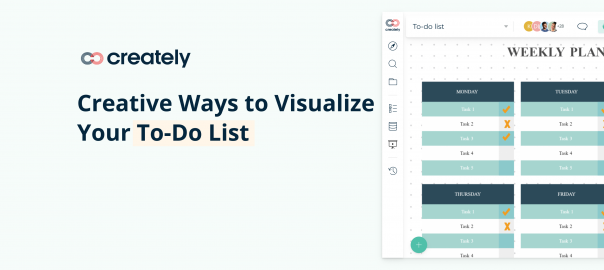Writing a business project proposal definitely takes time and careful consideration, but it will pay off when you have managed to impress your investors.
Your project getting approved or funded may depend on how effective your project proposal is, so investing that extra effort into perfecting it is essential.
There are steps that you can follow to make sure that your business proposal makes a great impact on your company’s decision-makers, and in this post, we will walk you through them, explaining how to write a project proposal step-by-step. Also provided are templates that you can use to write a winning project proposal.
What is a Project Proposal
Let’s start with the basics.
What is a project proposal? It’s a document that lists down all aspects of a project; its background, vision, goals, tasks, requirements, owners, associated risks, etc. So it basically explains what your project is, what you want to achieve with it, and how you plan to execute it.
It’s one of the many crucial parts of the planning phase of the project. It lays out each and every step of the project, allowing everyone to understand what is required of them, their priorities, and the common goal they are supposed to work towards.
The purpose of the project proposal is to communicate the value of your project to all stakeholders; clients, employers, investors, and convince them of the value of the project.
Benefits of a well-structured project proposal
- Clarifies the expectations of the project – project requirements and the action plan
- Helps increase the viability of the project
- Offers a large overview of the project allowing you to identify issues easily
- Simplifies project implementation
Different types of project proposals include
- Formally solicited – a proposal that is made in response to an official Request for Proposal (RFP). The RFP document usually outlines the stakeholder requirements and even sometimes spells out the instructions to prepare the proposal.
- Informally solicited – this type of proposal does not require an RFP, which means there is no official document outlining the demands of the customer or the stakeholder, therefore doesn’t consist of the specific details a formal one usually has.
- Unsolicited – this type of proposal is thought of by the person creating them and not expected or requested by anyone, yet they can be of a lot of value to the stakeholder.
- Continuation – this basically requires you to update an ongoing or already approved proposal or remind the stakeholders of it. You are required to check-in with the stakeholders and discuss progress.
- Renewal – this is written in support of renewing a project that has been terminated or outlived its usefulness.
- Supplemental – when you need more resources than what was originally allocated to a project, you can write a supplemental project proposal. Its purpose is to justify the need for extra resources and re-estimate the project scope and timeline.
How to Write a Project Proposal
Once you have identified the type of project proposal that suits your requirement, you can start writing your business project proposal.
Before you actually begin to write down the project proposal, there are a few preliminary steps that you need to take. These are:
- Identify who your stakeholders are. While you should aim to win the attention and interest of your stakeholders with your proposal, the best way to do that is to think like them. Understand who they are, what they already know of, and what they prefer in terms of your idea. Based on who they are, you can alter the information you include, and the language you use.
- Gather information about the problem the project is aiming to solve, especially in terms of how it’s affecting your stakeholders and their interests.
- Conduct research into the current state of the issue and the potential solutions that have already been discovered by those who are outside of your company or by your own team. This will help you adjust your own solution to generate a more solid argument or determine whether it’s worth pursuing (especially if the solutions found by others have already been tested and failed).
- Determine the impact of the project on your company’s success or how it will benefit your stakeholders. Layout the success metrics for the proposal and showcase the results, and if you find any risks involved, don’t be afraid to bring them to light as well; in any case, knowing them will allow you to alter your action plan to withstand them.
- Specify a timeline and the resources needed to complete the project. Check if the teams, equipment, and material needed to carry out the project tasks are available and the objectives can be achieved in a timely manner. Take into account the other projects your team will be working on, the equipment or material that’s currently unavailable, and any extra costs on resources you will have to bear in order to carry out the proposed project.
- Create an outline of your project proposal based on the information you have gathered. Write down the core elements; more or less the basic elements should include an introduction, problem, solution, the action plan, timeline and resources, and a conclusion.
Completing the initial steps above provides you a good head start to writing your business project proposal. Your next step is to organize your research into a coherent document – an actual proposal. Here’s how to write a proposal for a project from scratch;
1. Write the executive summary
The executive summary offers a quick overview of the proposal that is to follow. It’s not only the first thing the reader will see, but sometimes it’s the only thing a stakeholder will read before making a decision about the proposed idea. Therefore, the executive summary should make sense to someone who hasn’t read it; for this purpose, it should consist of a synopsis of all the sections in the document.
- An analysis of the problem
- The conclusions you have arrived at
- The recommended action plan
Aim to keep the summary intriguing and convincing; make use of notable statistics in the first two sentences to pique the interest of the reader.
2. Define the problem
Give a brief description of the problem your project aims to solve.
Referring to the research you have done earlier, you can explain the current situation of the problem in terms of what’s being done about it both within and outside of your organization, and why your stakeholders should be concerned about it.
While you need to be straightforward with your explanation, remember to use the language and concepts your stakeholders resonate with the most.
03. Introduce your solution
Now that the stakeholders know what the problem is, it’s time to explain how your project or your solution comes into play. This section is usually the most detailed out part of the project proposal, and to retain the attention of your reader, you can play around with the use of visuals.
This section should explain your solution along with how you plan to execute it. It should reinforce the fact that your decision is backed by proper and thorough research. Clarify,
- The project approach; how the team will be put together, the tools and equipment that will be used, and how you will be handling the changes during execution.

- Project schedule; list the project tasks along with time estimations for each of them. The task breakdown will enable you to allocate your team properly, and you can use a Gantt chart in this section to clearly outline the resources, tasks, and timeline.

- Project deliverables; deliverables are the outcomes of a completed project (i.e. product, service or a detailed report). Mention your project deliverables along with delivery dates. Use a work breakdown structure here to help the stakeholders get a clearer picture.

As required you can also include additional information such as the anticipated risks and steps you would take to overcome them, a communications plan, and milestones to help track progress.
In order to make this section more reader-friendly, you can present all this information using an action plan.

04. Outline the project costs
This section focuses on the estimated cost of the proposed project. It should include an itemized budget for the project.
The purpose of this section is to help the investors get an idea as to whether the project costs can fit into their own budgets, therefore make sure that the calculations are as accurate as possible.
05. Conclude your proposal
Provide a brief review of all the key points discussed throughout the proposal. As this is the last section, it’s also the last chance you have to convince your stakeholders; therefore reinforce your solution and why your stakeholders should care about it while ensuring that your proposed method is in the best interest of the organization.
06. Add an appendix
This section is reserved for the reference documents, charts, graphs, etc. that were referred to when writing the project proposal.
07. Revise and refine
In order to substantiate your professionalism and win over your stakeholders, you must present an error-free project proposal.
Proofread your proposal to check for any spelling mistakes and grammatical errors. Often a fresh pair of eyes helps detect mistakes easily; either get a colleague to review the document or wait 1-2 days and review it anew yourself.
Project Proposal Templates
A detailed, well-structured project proposal will help you stay focused and stay on track by offering you the necessary instructions throughout the project, which is certainly better than picking things out from your memory or conversations you had with your team during that meeting a few weeks back.
To make it easy for everyone, you can have a standard project proposal template that they can refer to when documenting their project idea.
Following are a few project proposal templates that you can share with the team.
One Page Business Project Proposal
You can edit this template online and share the link with your team or the stakeholders online so they can collaborate on it too. Connect with them via Creately in-app video conferencing and walk them through each section of the proposal. Alternatively, using in-line commenting, they can also leave their feedback on the proposal.

Project Proposal Template

What’s Your Process for Writing a Business Project Proposal?
Creating a project proposal can sometimes be a mini project in itself. Using a proper process checklist or a standard template can help you accelerate things. Before writing your project proposal, follow the preliminary steps mentioned above first. Keep your target stakeholders in mind and make a compelling case for your proposal.
Want to share your thoughts on how to write a proposal for a project ? Let us know in the comments section below.




